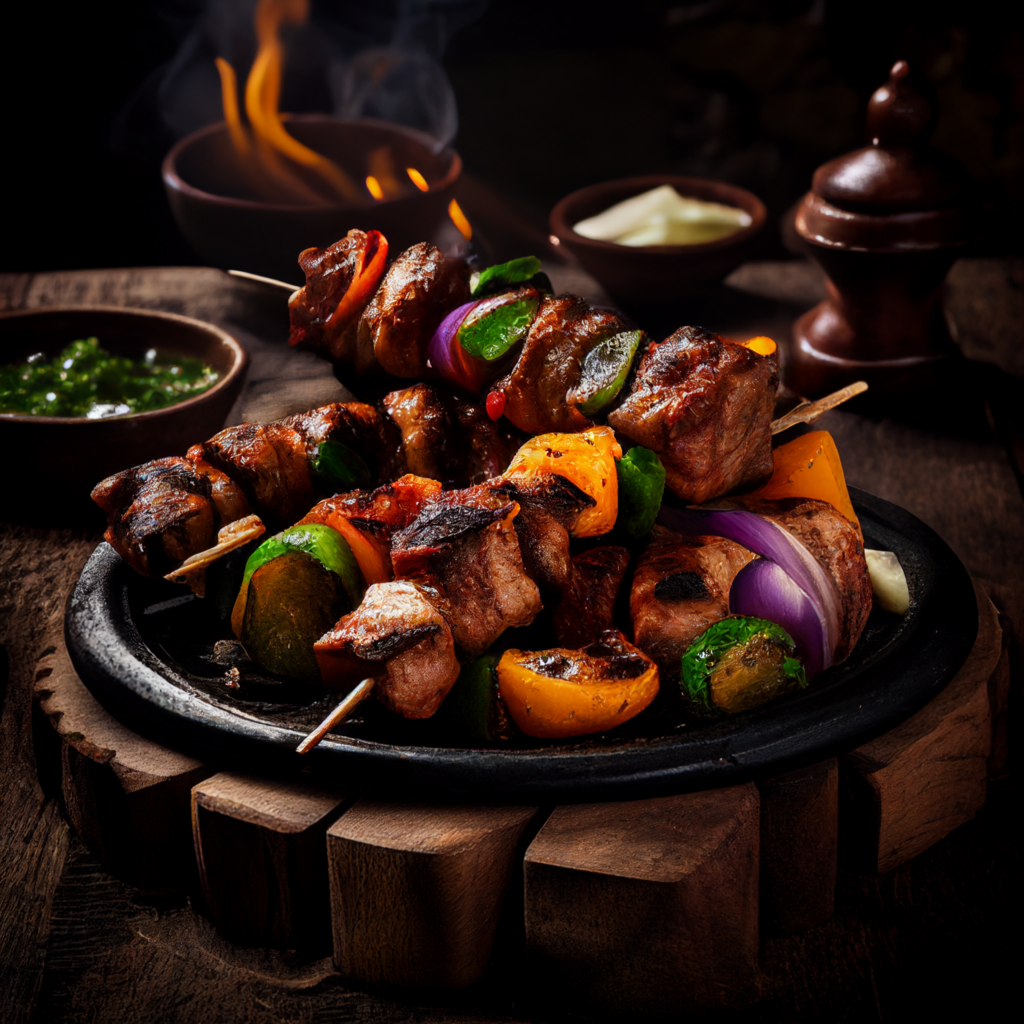
Shashlik, a dish made of skewered and grilled meat, has a long and fascinating history that spans many cultures and countries. It's known by many different names and variations, but the basic concept remains the same: marinated meat cooked over an open flame.
The origins of shashlik can be traced back to the Middle East, where skewered meat was cooked over an open fire on the battlefield. Soldiers would use their swords to skewer the meat, then roast it over the fire to feed themselves and their comrades. As the Middle Eastern armies conquered new lands, they brought their cooking techniques with them, spreading the popularity of skewered meat throughout the region.
The dish evolved over time as it was adopted by various cultures, each adding their own unique flavors and cooking methods. In the Caucasus region, shashlik is traditionally made with lamb, marinated in a mixture of onion, garlic, and vinegar, and grilled over an open flame. In Turkey, it's known as şiş kebabı, and can be made with beef, lamb, or chicken. In Iran, it's called shishlik, and is typically made with lamb or veal.
Shashlik eventually made its way to Russia, where it became a beloved dish and an important part of the country's cuisine. In fact, the word "shashlik" is now a part of the Russian language, and is used to refer to any type of skewered and grilled meat.
Today, shashlik is enjoyed all over the world, with many different variations and preparations. It's a popular dish at cookouts and picnics, and is often served with traditional sides like rice, salad, and flatbread.
In conclusion, the history of shashlik is a testament to the power of food to bring people together and bridge cultural divides. Whether you're enjoying it in the Middle East, the Caucasus, or in your own backyard, shashlik is a dish that is sure to satisfy and delight.
As shashlik has gained popularity around the world, many different recipes and preparations have emerged. In some countries, it's made with chicken or fish, while in others it's made with pork or beef. Some recipes call for the meat to be marinated for hours or even overnight, while others use simple seasonings and rely on the natural flavor of the meat.
In many cultures, shashlik is more than just a meal; it's a symbol of community and togetherness. It's often served at large gatherings, such as weddings, festivals, and religious celebrations, where friends and family come together to share a meal and celebrate their traditions.
Despite its long and storied history, shashlik remains a beloved and timeless dish that has stood the test of time. Its versatility and adaptability have allowed it to evolve and change with the times, while still retaining its core essence of being a delicious and satisfying meal.
So whether you're grilling shashlik in your own backyard or enjoying it at a family gathering, take a moment to appreciate the rich history and cultural significance of this beloved dish. From the Middle East to Russia and beyond, shashlik is a true global treasure that has something to offer everyone.
Despite its popularity and cultural significance, shashlik has faced controversy and criticism in recent years. Some have raised concerns about the hygiene and safety of the dish, particularly when it's prepared and served at large gatherings.
In response, many countries and organizations have implemented stricter regulations and safety measures for the production and serving of shashlik. For example, in Russia, there are specific guidelines for the marinating and grilling of the meat, as well as regulations for the sale and distribution of shashlik at public events.
In addition to concerns about safety, there have also been debates about the ethical implications of eating meat. Some have argued that the mass production of meat for dishes like shashlik is harmful to the environment, and that a shift towards plant-based diets is necessary to combat climate change and protect the planet.
Despite these concerns, shashlik remains a beloved and culturally significant dish that has stood the test of time. Its history and traditions have shaped the way we cook and eat meat, and its enduring popularity is a testament to its delicious flavor and satisfying simplicity.
As the world continues to change and evolve, shashlik will undoubtedly continue to adapt and grow, taking on new flavors and styles while still retaining its core essence as a timeless and beloved dish. Whether you're grilling up shashlik at a family gathering or trying it for the first time at a new restaurant, you can be sure that you're experiencing a rich and flavorful tradition that has been passed down through generations.